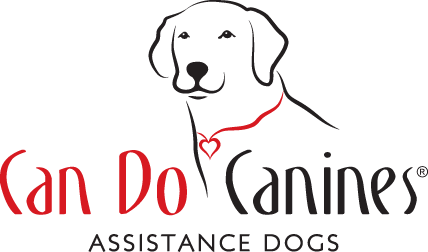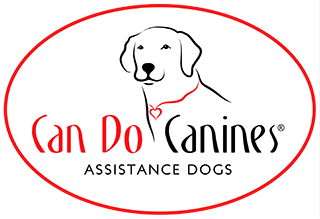A happy dog often has something in their mouth. Whether it’s just to hold and show off, or even better: if it can be shredded or eaten. One of the difficulties of teaching dogs to live in a human world is reigning in how they naturally want to explore the world with their mouths. They need to learn what toys belong to them and what belongs to us. Sometimes these items will even be identical in appearance, such as many toys for human babies.
Preventing Item-Grabbing Habits
As with any behavior we are looking at changing, the first step is preventing the habit from happening. This makes sure that the dog is not receiving any reinforcement from stealing items or food, and it allows us time to build up a new behavior in the meantime. What makes it incredibly difficult with behaviors such as counter surfing is how they frequently get on a random reinforcement schedule. Usually there is nothing for the dog to steal, but the unpredictable nature of the reinforcement can turn the dog into little gamblers. They are eternally optimistic that they will get a reward even if months have gone by without any success.
You will need to think of all the items and/or locations the dog is prone to grabbing things. If the dog only steals shoes by the entryway, then you can look at either putting the shoes in a covered container the dog can’t get into, or you can block access to the entryway itself.
Tools that will make your life easier will be baby gates, lockable containers (even locking trash cans), and the use of a crate or xpen when you aren’t able to watch the dog. Because dogs can be experts at moving off unnoticed, you will have the best success if you focus on guarding the items/rooms over the dog. Many people will use gates to prevent access to the kitchen entirely so they don’t have to be quite as diligent about making sure food is never on the counters.
The other items you will want to have easy access to are alternative items the dog can pick up. Have a variety of bones and stuffed toys (if you don't have a dog who destroys toys!) around your home within reach of you at all times.
Interrupting and Redirecting to Toys
When you first start this training, you will want to have only dog appropriate toys around. Give the dog time to develop a strong reinforcement history for chewing bones and playing with dog toys. Praise the dog when you see them engaging with a toy, and if you have time you can even go over and start a game with them or a cuddle session.
You can introduce the dog to a cue such as “Where’s your toy?” and encourage them to find a toy that is within easy reach.
As the dog starts to love his toys, you can purposefully introduce items on the floor or counter that you want him to ignore. Start with boring items like a pen or piece of paper, and gradually introduce more exciting items like mittens. When you introduce these tests, try to actively be playing with the dog and a toy. As soon as he starts to investigate the human item, you can verbally redirect him back to the toy that you are excitedly moving in your hands. Praise for making the right choice! If you need to, calmly remove the item from the dog’s mouth and set it back on the floor next to you where you can guard it with your hand or body. Keep the items on the ground or on a low surface such as a coffee table where he has to make an active choice to not pick them up.
When you are no longer able to directly supervise the dog, pick up the items and go back into management mode.
As your dog progresses and finds it easy to stay engaged with a toy when tempting items are on the ground, start to test your dog when they are out of play mode. Can your dog remain chewing a bone or lying on a dog bed when you drop your items onto the floor? Praise your dog for making a great decision! Start to build up the duration you can leave tempting items around without needing to intervene.
Bringing Items
What if your management fails and you suddenly find that the dog has brought you a shoe that you thought you had put away? Any time you notice your dog has an item in their mouth that they shouldn’t have, calmly approach and remove the item. Praise the dog for dropping it, and then place the item on the ground within easy reach of your body for at least a few minutes while you are able to supervise. Then put the item back into lockdown where your dog can’t get it.
Do not reward the dog for bringing you an item that you did not ask for. Ask yourself why the dog might be bringing the item to you. Is it time for a potty break? Are you accessible for the dog to bring the item to you, (i.e. are you elevated in a chair)? Are they asking you for playtime? Make sure you set structured playtime into your team schedule.
Keep Away
What if your management fails, but instead of letting you grab the item, the dog goes into keep-away mode?!
If the dog is playing keep away, your job is to remain as calm as possible while you attempt to approach him. You want to slowly “walk the dog down” without any lunging, reaching or verbally cuing the come/drop (as your dog isn’t listening at this point). By moving slowly and calmly you are trying to be as least reinforcing as possible. Eventually, the dog will either get itself trapped in a corner and/or realize this is no longer fun. The dog might even try to lie down to chew on the item and be annoyed that they have to keep getting up to run away from you each time you come close. You want the dog to learn that running away is futile, you keep approaching, and that this is not a game of chase!
Alternatively, with a dog who has a strong keep away history, go ahead and use food rewards as needed to get the dog to come to you and drop the item. Try to only use food until the dog no longer wants to play keep away but instead easily lets you take the item. You don’t want to accidently teach your dog the chain of picking up an item just to get a cookie.
To note, there is a difference between you asking your dog to retrieve an item for you vs playing fetch. If you are asking your dog to retrieve as a trained task and they decide to play keep away, please contact your CSC. If you are in the middle of a game of fetch, it can be okay for them to run around a bit, roll around on the toy and then bring it back to you.
Ignoring Food
A dog stealing food off of counters, or even the floor, is the same issue as the dog stealing items. However it has the added difficulty of the reinforcement being instant and a lot more powerful. Once the dog has the food, it is gone. There is (usually) no removing it and putting it back on the floor to work on not picking it back up.
Instead of using toys and attention like we used to reinforce leaving items, we will use the more powerful motivator of food to reinforce the dog leaving food. In order to get food, the dog has to leave food.
Automatic Leave-it Training
All the training that has been done to work on the dog not grabbing food off the floor when in working mode will continue to be applied to your home manners.
- DO NOT ASSUME your dog will leave dropped items alone.
- Praise it when you see it! Your dog walks past a dropped piece of food? YES - cookie from YOUR hand!
- Remember, your dog SHOULD NOT automatically pick up a dropped item on the floor. This alone could be life saving!
You will want to continue your dog’s training so that the dog is working on:
- Duration: How long can the dog continue to leave a piece of food on the floor
- Movement of the food: Can the food be dropped or rolled?
- Movement of the dog: Can the dog walk around the food to follow you, go to mat, etc.?
- Value of the food: Can the dog leave your empty plate of food? Your full plate of food?
- Height: Can the dog leave the food at their nose level like on a chair or coffee table? Food peeking on the edge of a counter?
- Surprise distractions: What if the dog didn’t see you place down the distraction but came upon it when let out of their crate, or coming back inside?
Think baby steps! Reward your dog frequently for handling these challenges outside of “work mode” so your dog always thinks a reward is available from you. Have treat jars around your house that allow you easy access to rewards while testing your dog.
Interruption
What if you underestimated the dog’s ability level and you see them starting to go for the food?
The first thing to ask yourself is can you physically prevent access? Can you use your hand or foot to cover up the food? If you can, try to remain silent and let the dog problem solve. Remember that we want this training to be an “automatic” leave-it where the dog is not waiting for a cue from you. When the dog backs off and looks at you, reward!
And if you can’t block the food, step towards the dog and use a verbal redirection. You’re no longer in training mode but in the backup plan/ Say “leave it” or “ah ah” or really whatever comes out of your mouth! At this point your focus is preventing the dog from getting rewarded. You will then readjust your management and your training plan to help the dog be successful next time. If you always use a verbal cue to stop the dog then the dog is learning that they should lunge for something quickly before you have the chance to see it and verbally stop them. Instead we want to focus on building up the dog’s ability to see food on the floor as an opportunity to earn rewards from us, whether our back is to them or we are out of the room. Focus on building up that success slowly.
Using technology
One huge difficulty for training is to teach the dog that the house rules still apply even when you are not in sight. Luckily we can use the cameras on our handheld devices to set up situations where we can see what the dog is doing from a different room. There are many apps that allow you to record the dog on your tablet while you watch in real time what is happening on your phone.
Make sure that when you are setting up this practice session that you frequently go in and reward the dog before a mistake happens. Even if you saw your dog was starting to raise their head and sniff, you can still walk in and praise/reward for your dog not putting their feet on the surface or grabbing the food or item.
Remember that reinforcement builds behavior. Usually our attempts at punishment only stop the behavior in the moment and do nothing to deter the dog from trying again later on. Catch the dog doing what you want!
Teaching Boundaries
As mentioned in the management section, teaching the dog to stay out of a specific location can be extremely useful when preventing problem behaviors from occurring. While you might start by using gates and closing doors, you can also teach the dog that he is never allowed into a certain location unless given a release cue. This works well in houses where the dog would not need to regularly be in the room. Common places that help with household manners include keeping the dog out of the kitchen, bathroom or entryway.
Keep in mind that if your goal is for the dog to only come in the areas when invited, then you will need extensive management to prevent the dog from going in when you are not there. Use gates or doors until the dog understands the rules. If you are okay with the dog being in an area normally, then you might decide to train an out cue that tells the dog to leave the area on cue and remain out until released back in.
Teaching Out
This cue will tell the dog to leave the room and wait for their release cue. The goal is to be able to send the dog out of the area from a distance. This is easiest to teach with well defined thresholds such as going out of a doorway, but eventually can be transferred to changes in flooring or less defined boundaries that you gradually teach the dog where the line is.
Start by remaining close to the threshold with the dog on the same side as you. Look where you want the dog to go and gesture with your empty hand to encourage the dog to step forward. Once the dog starts to move, mark this action either with “find it” and toss a cookie forward into the new space to get the dog to finish moving across the border, OR mark “yes” and lure the dog with a cookie in your hand to step across the border and turn to face you.
Once the dog is across the boundary, feed several more cookies to reinforce being on the other side. Always remember to give your “okay” release cue to invite the dog back into your side and start again. If the dog starts to come across before being invited back, gently body-block the dog from moving forward.
Gradually increase the distance the dog will walk away to cross the boundary. Delay your marker cue until the dog is fully across before showing them their reward. When the dog is starting to get the idea of going across the boundary to get the rewards, introduce the cue of “out.” This cue will tell the dog to leave the area AND to wait on the other side until released. It is not a stay behavior as the dog is free to go find a dog bed to lie down or chew a bone.
Automatic Wait
If your plan is to never allow the dog into an area unless invited, then the training is similar, however you will not use the out cue. Instead you will teach the wait at the boundary as the default behavior, no cue needed other than the boundary itself. You will need to use your gates extensively until the dog understands the rules when not in training mode.
Start by removing the gates when you’re ready to train and keep the dog on the outside of the boundary, opposite you. Use your find it cookies to reinforce your dog for being on the other side of the boundary. Repeat this several times to get the dog moving and expecting all rewards to occur on their side of the boundary.
If the dog starts to come across the boundary, gently body block by stepping into the space.
Gradually start to increase distance on your side of the boundary. As the dog is chasing a “find it” cookie, step back so that the dog has to choose to stop at the boundary before getting to you. This practices their ability to wait at the boundary while in motion, versus choosing to wait while already stopped at the boundary.
You can increase distractions by dropping food on the floor, crouching, turning your back, etc.
Remember that when you are done practicing, put your gates back up so that the dog doesn’t practice going across the boundary when you’re not there. At times where you choose to allow the dog to come into the area, always use a release cue that you give after the dog has already chosen to pause at that boundary line.




